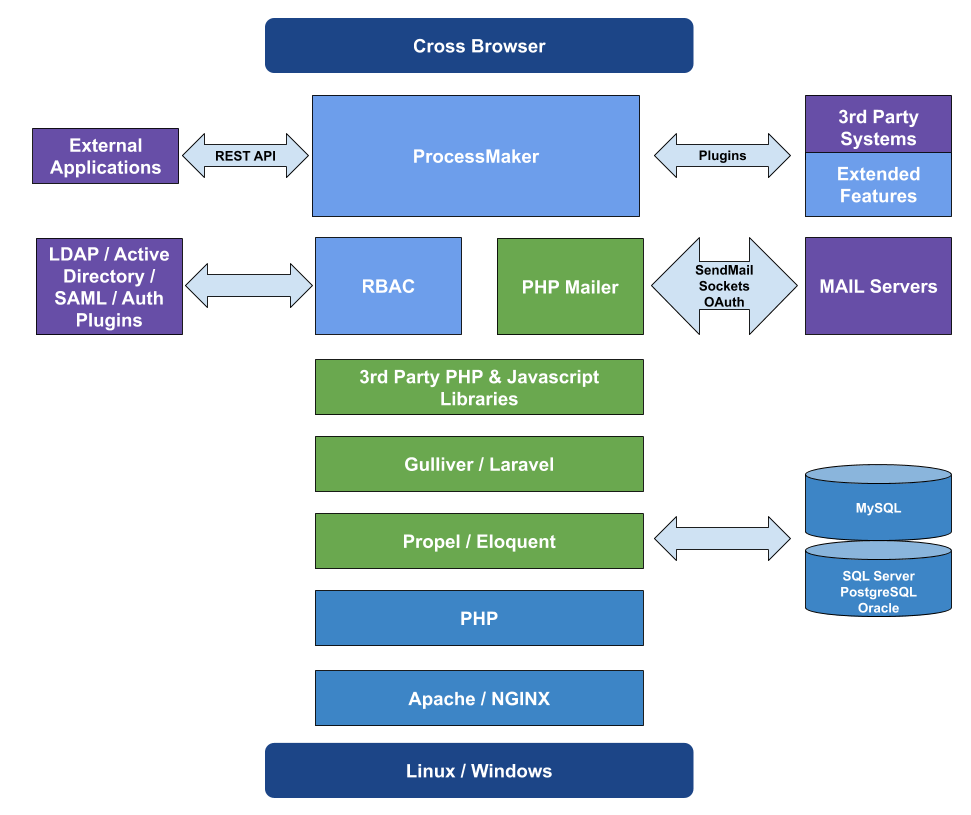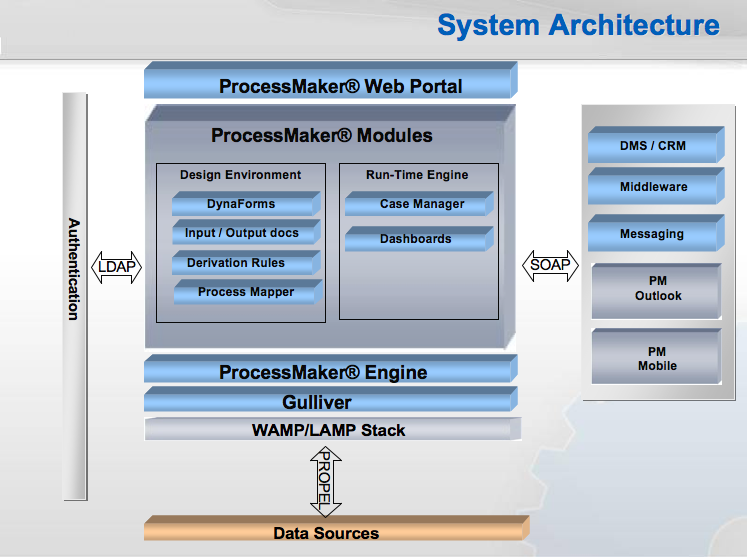Please rate how useful you found this document:
Architecture
The architecture diagram below shows the relationship between the major components of the ProcessMaker Server and its interfaces with the outside world.
- ProcessMaker is designed on the LAMP / LEMP / WAMP stacks:
- Linux, UNIX or Microsoft Windows is the operating system;
- Apache or Nginx, the web server;
- MySql, the database server;
- PHP, the programming language.
- ProcessMaker uses object-relational mapping softwares Propel and Eloquent to map between ProcessMaker's PHP classes and databases. That opens access to different DBMS, including MySql, PostgreSQL, Oracle, and SQL Server (and Sybase if using Linux/UNIX).
- ProcessMaker is designed on the Gulliver framework, an open source development framework created by ProcessMaker. For more information, see Gulliver Programmer's Reference Guide.
- ProcessMaker uses 3rd Party PHP and Javascript libraries on different features.
- ProcessMaker uses Laravel, an open source framework. For more information, see Laravel official page.
- ProcessMaker uses RBAC to manage user roles.
- ProcessMaker provides External Applications connectivity via REST API.
- ProcessMaker uses PHP Mailer engine. ProcessMaker is also compatible with other Mail Servers via SendMail, Sockets or OAuth.
- ProcessMaker is web-based and cross-browser, though it is optimized for Mozilla Firefox.

SYSTEM ARCHITECTURE
- ProcessMaker contains two main components - a design environment and a run-time engine.
- The design environment includes tools to map processes, define business rules, create dynamic forms, and add input and output documents.
- The run-time engine allows for cases to be started and run through the process. This engine turns the process map design into a fully-functioning application.
- ProcessMaker is web-based and cross-browser, though it is optimized for Mozilla Firefox.
- ProcessMaker can connect through web services to other systems, including but not limited to DMS and CRM systems, middleware, messaging, PM Mobile, etc.
- Using LDAP, ProcessMaker will be able to manage high user authentication.




